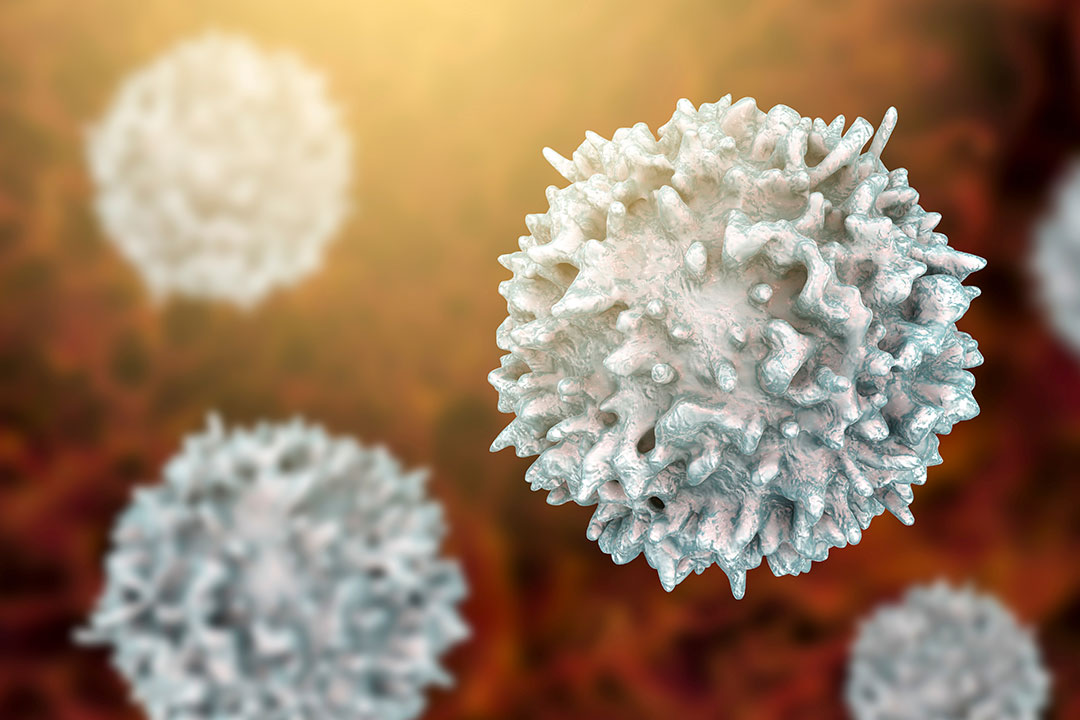T cell army: How infection-busting cells from previous coronavirus exposure could protect against severe COVID-19
While immunologists often focus on antibody responses to SARS-CoV-2, T cell immunity may hold the key to preventing severe COVID-19 disease.
- 17 December 2021
- 5 min read
- by Linda Geddes

The rise of the Omicron variant has challenged the effectiveness of COVID-19 vaccines: News that antibodies generated through previous infection or vaccination are less capable of neutralising the variant suggest a surge in breakthrough infections may be inevitable.
However, many immunologists are quietly optimistic that the proportion of people who develop severe disease will be significantly lower during this wave compared to previous ones.
T cells don’t prevent infection, but they do help to prevent the virus from spreading to other cells and to clear an infection that has already started, which could spell the difference between mild and severe disease.
A key reason is that those who have been vaccinated, or exposed to the virus as a result of infection, should possess T cells: immune cells capable of recognising, and destroying virus-infected cells. Although they may not prevent people from becoming infected with SARS-CoV-2, they may reduce the duration and severity of their illness.
South African scientists have proposed that T cells from previous COVID-19 infection and/or vaccination might help to explain why proportionately fewer people appear to have been hospitalised during the country’s current Omicron wave, compared to earlier waves of infection.
In Gauteng province, which has been at the epicentre of the South Africa’s Omicron wave, some 73% of individuals were found to have some degree of immunity to SARS-CoV-2 as a result of vaccination or previous infection. “It is probably this underlying T cell immunity that is preventing the progression of the infection to severe disease, and resulting in much fewer cases of hospitalisation and death compared with what we’ve experienced during the course of the three previous waves,” said Shabir Madhi, a professor of Vaccinology at the University of the Witwatersrand in Johannesburg.
Immune memory
Adaptive immunity is a form of immune protection that develops after exposure to a pathogen (such as a virus) or vaccine. There are two key components: B cells, which produce antibodies that circulate in blood and other body fluids, binding to pathogens and blocking them from infecting cells; and T cells, which recognise and destroy infected cells, as well as supporting B cells to make antibodies. Once the immediate threat has passed, small numbers of memory B and T cells remain in the body, primed to create fresh armies of B and T cells, should they encounter that pathogen again.
Have you read?
Antibodies are primed to recognise and latch onto proteins on the outside of pathogens, such as the SARS-CoV-2 spike protein (the protein that most existing COVID-19 vaccines are based on). They are extremely powerful weapons, and if there are enough of them, may be able to block infection altogether – known as “sterilising immunity”.
However, if a new variant emerges with significant changes to its outer proteins, fewer of these antibodies will work. Antibodies against SARS-CoV-2 also appear to wane quite quickly after infection or vaccination, which could mean that people have less immediate protection against infection – although immunologists still don’t know what level of antibodies is necessary to neutralise the viral threat.
The existence of memory B cells should also mean that new antibodies are generated in response to reinfection, or a breakthrough infection in someone who has been vaccinated, but they may take several days for them to reach adequate levels – too late to prevent initial infection.
Infection busters
T cells are different. For one thing, they are primed to recognise more protein snippets from viruses, than antibodies, which makes them more resilient in the face of new variants. They also stick around for longer. For instance, people who had SARS during the 2003 outbreak, still had T cell responses to the virus 17 years later. These existing T cells will also be backed up by fresh T cells generated from memory T cells, if someone encounters antigens from the pathogen again – either as a result of infection, or additional vaccine doses.
T cells don’t prevent infection, but they do help to prevent the virus from spreading to other cells and to clear an infection that has already started, which could spell the difference between mild and severe disease. They could also help to reduce transmission, by reducing the amount of virus that infected people carry in their bodies.
Unfortunately, T cells are harder to detect than antibodies, and fewer laboratories possess the equipment to do so, meaning there’s no widely available test that can tell someone how strong their T cell immunity to SARS-CoV-2 is. More research is also needed to establish how T cell responses differ between individuals who have experienced mild, asymptomatic, or more severe infections, and the extent to which T cells can prevent against Long-COVID-19.
T cell top-ups
The good news is that receiving the recommended dosing schedule of COVID-19 vaccines appears to trigger strong T cell responses against SARS CoV-2. Evidence is also starting to emerge on the impact of mixing different vaccine types. For instance, according to a study published in The Lancet on 6 December, combining a first dose of the Oxford/AstraZeneca vaccine with a second dose of either the Novavax or Moderna vaccines (which utilise different vaccine technologies) resulted in far higher levels of neutralising antibodies and T cells compared to when two doses of the Oxford/AstraZeneca vaccine were given.
Meanwhile, some vaccine developers are investigating ways to stimulate T cells more effectively e.g., by incorporating fragments of SARS-CoV-2 proteins that mutate less frequently than spike proteins into their vaccines – or perhaps even combining them. Doing so could also help to future-proof vaccines against new variants, should additional ones emerge in the coming months and years, meaning fewer booster shots may be necessary.








